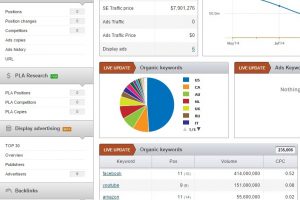7 Ways To Use Content Marketing
Seven methods that can help increase your customer base through content marketing
Creating and marketing your content can be one of the best and quickest ways to promote your business. As a matter of fact, if you can compose a to-do list containing just seven items, then you can easily compose an article that can help you maximize your customer base as well as profits.
Listed below are seven methods that can greatly increase your business from published articles through content marketing.
1 – Article content can in no time place you as a professional within your industry.
We all know how powerful the written word can be. Crafting informative articles will separate you from your competition. You will never have to convince your readership that you are an expert on the subject. Your articles will do that for you, due to the fact that well-published articles will always increase your “credibility”.
2 – Articles can advertise your business 24/7.
The moment your article is published on the internet is like having a salesperson do the selling for you. You now have your business advertised 24 hours, 7 days a week, 365 days a year to an international audience.
3 – A single article can be utilized in a variety of ways.
This is known as leverage. A single article could be used for a free report, as an incentive, featured in a newsletter or blog, transformed into a book, and countless other ways.
4 – Articles can be used to spread the news in regards to your business and products.
5 – Promoting articles is painless, effortless and economical.
This is especially true in comparison to other means of marketing online. Remember, there is no cost to you when it comes to writing an article. There is also no cost to have it listed on article directories. Consider what it really might cost if you had to pay someone just for the exposure.
6 – Well written articles can help in building your mailing list.
Whenever you have a few articles under your belt, you then have the potential to gain attention from the masses of prospects out there. It’s important to continue growing your business in order to keep traffic as well as new prospects coming to you.
7 – Article marketing makes it possible to stay connected with your customer base while selling more products.
Use Content Marketing To Stay “Top Of Mind” with Your Audience.
Remember, it normally takes eight contacts or more for turning a new prospect into a customer. Well written articles enable you to stay connected with new prospects while providing them with useful information.

A seasoned digital marketing professional with over 20 years of expertise in digital marketing, search engine optimization, search engine marketing, brand development, conversion optimization, lead generation, web development and data analytics. He is a strategic digital marketing thought leader in a multitude of business verticals including automotive, education, financial services, legal marketing and professional services.



 1. Clearly state the value of your offer
1. Clearly state the value of your offer
 2. Duplicate content
2. Duplicate content



